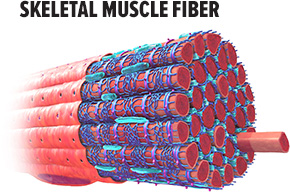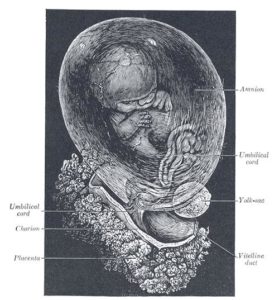Identical Twins, Physical Fitness, and Transgender Identity in the News

The terrific new documentary “Three Identical Strangers” tells the remarkable tale of triplets separated in infancy who met for the first time at age 19, in 1980. Their matching faces, mannerisms, behaviors, and quirks reverberate throughout the film, astonishing because the triplets were raised in economically diverse families. The film pays less attention to what makes them different.
Identical Twins That Differ Markedly in Physical Fitness
Another intriguing case of nature vs nurture in identicals is published in the new issue of The European Journal of Applied Physiology. Katherine Bathgate, James R. Bagley, and Andrew J. Galpin and their colleagues, from a trio of California colleges, compared 52-year-old identical twins who differ greatly in their physical fitness level. “TT” is a runner and triathlete, “UT” a sedentary truck driver. Because they share all their genes, differences in physical fitness reflect what the twins do and have done, not what they inherited.
When the study began TT was 6’1’ and 207 pounds and UT was 6’0” and 230 pounds. Their lifestyles diverged in the mid-1980s. Both played recreational baseball and basketball from ages 10 to 20, with UT keeping up basketball and light cycling until age 39, when an ankle injury sidelined him.
TT ran track and cross-country in high school and college, then began running marathons with impressive times, adding up to more than 21,000 miles during his fourth decade. After that he added resistance training and started swimming and cycling. He became a triathlete. In the week before the experiment, TT ran an average of 69 minutes per day. UT walked for 22 minutes each day.
 For three consecutive days, the brothers underwent a battery of tests “to explore the effects of 30 years of endurance training on skeletal muscle health and physiological performance,” the researchers write. That included measurements of body mass index, height, heart and lung health, power, strength, size of skeletal muscles, blood tests, and physiques. Analyses of proteins and gene expression profiled skeletal muscle cell fiber type, metabolism, growth, repair, and inflammation. All that molecular probing required an abdominal muscle biopsy, which must not have been much fun. The twins also submitted MyFitnessPal data on diet and exercise from the week prior.
For three consecutive days, the brothers underwent a battery of tests “to explore the effects of 30 years of endurance training on skeletal muscle health and physiological performance,” the researchers write. That included measurements of body mass index, height, heart and lung health, power, strength, size of skeletal muscles, blood tests, and physiques. Analyses of proteins and gene expression profiled skeletal muscle cell fiber type, metabolism, growth, repair, and inflammation. All that molecular probing required an abdominal muscle biopsy, which must not have been much fun. The twins also submitted MyFitnessPal data on diet and exercise from the week prior.
And so the twins differed in their “exposomes.” That’s an odd new “ome” word for me because the study tracked outside influences on gene expression. “Environment” would probably have sufficed.
Anyway, as expected, the twins’ profiles relating to physical fitness varied quite a lot. TT had lower resting heart rate, blood pressure, body fat, cholesterol, triglycerides and blood sugar, and greater endurance and aerobic capacity. His muscles had a much higher maximum rate of oxygen consumption during exercise, or “VO2 max,” equivalent to that of a 30-year-old. It was recorded while the twin biked, indicating excellent heart and lung health as well as superb muscle efficiency. TT also had 55 percent more “slow-twitch” muscle fibers than the trucker, which translates into endurance. “He was like a machine,” Dr. Bagley said.
 In contrast, UT’s VO2 max was age-appropriate. His only advantage was stronger leg muscles, perhaps from carrying more weight around for 30+ years, the researchers suggest.
In contrast, UT’s VO2 max was age-appropriate. His only advantage was stronger leg muscles, perhaps from carrying more weight around for 30+ years, the researchers suggest.
As the investigators continue to assess the men at five-year intervals, they’ll track “health span” – the ability to live longer in good health and independently, which may be more meaningful and practical than simple longevity. The study is only a sample of one twin pair, but suggests that blaming one’s genes isn’t a valid excuse to avoid exercise.
A Transgender Woman With a Cis-male Identical Twin
Yet a third recent mention of an interesting identical is actress Nicole Maines, slated to play Nia Nal, “a soulful young transgender woman with a fierce drive to protect others,” in the CW series Supergirl. Maines, a 20-year-old transgender activist, is transgender and has a cis-male identical twin.
This puzzled me.
A few months ago I wrote “20 Gene Variants and Transgender Identity: What Does It Mean?” and received positive feedback from people relieved to learn that biology might explain their gender identity. But identical twins share 100% of their genes, not counting somatic mutations that occurred after fertilization. How could Nicole and her brother be discordant for gender identity, if biology plays an important role?
Maybe it isn’t all genetics.
Could the disconnect have something to do with the extra-embryonic membranes, the structures that support the embryo and fetus that come sliding out at birth? Identical twins may have the same genes, but they may be of three types, depending upon which of the membranes they share. Maybe “exposome” is an ok term after all, because a difference in the biochemical traffic across extra-embryonic membranes could impact the prenatal environment, important at the time when the reproductive system emerges from the initial dual sets of structures, one female, one male. Here’s one way that might happen.
 The finger-like projects of the chorion develop into the placenta by about 10 weeks after fertilization. The placenta secretes hormones that maintain the pregnancy and delivers nutrients to the fetus. At week 8, when embryohood ends, the amnion swells with the fluid that will cushion the fetus and keep temperature and pressure constant until it bursts, liquid trickles, and labor ensues.
The finger-like projects of the chorion develop into the placenta by about 10 weeks after fertilization. The placenta secretes hormones that maintain the pregnancy and delivers nutrients to the fetus. At week 8, when embryohood ends, the amnion swells with the fluid that will cushion the fetus and keep temperature and pressure constant until it bursts, liquid trickles, and labor ensues.
Identical twins may have:
- separate chorions and amnions
- share a single chorion and amnion
- share a chorion but have separate amnions
I can’t quite imagine exactly how, but perhaps Nicole and her twin had separate chorions and somehow were bathed in different proportions of testosterone and/or estrogens at a critical time before birth.
I await an explanation from a reader!

[…] Source: Identical Twins, Physical Fitness, and Transgender Identity in the News […]
It is worth noting that difference in pregnancy outcomes for multiple embryos in a single pregnancy isn’t particularly uncommon. Look up ‘vanishing twin syndrome’. It happens VERY frequently.
Thanks, yes, I know about vanishing twin syndrome. What does that have to do with the post? I’m not sure what I’m missing. Please clarify.
This is super interesting! I am a fraternal twin, I am cis-female and my twin brother is ftm transgender. As I understand we would have separate placentas and amniotic sacs, so I wonder how exposomes and genes affect the two of us. I would be curious to see more findings on frats!
My identical twin girls had separate sucks, my water brock twice. One is transgender male, the other one is a cis gender.